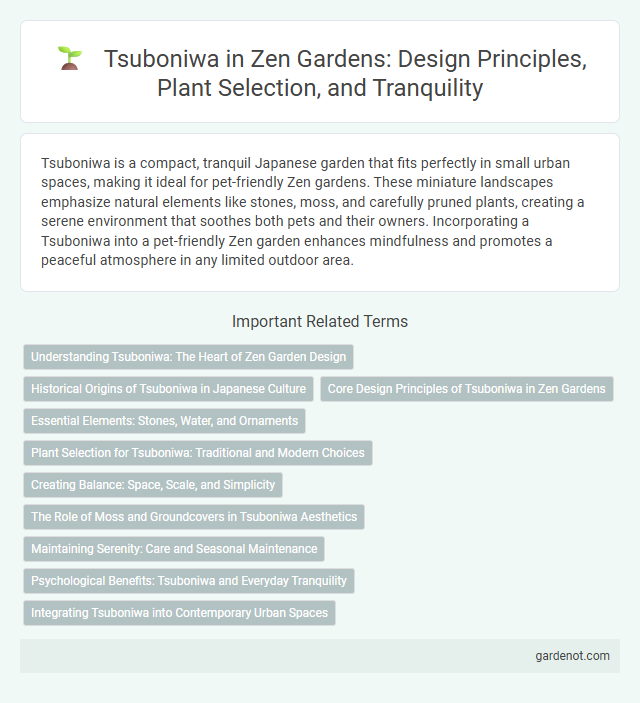Tsuboniwa is a compact, tranquil Japanese garden that fits perfectly in small urban spaces, making it ideal for pet-friendly Zen gardens. These miniature landscapes emphasize natural elements like stones, moss, and carefully pruned plants, creating a serene environment that soothes both pets and their owners. Incorporating a Tsuboniwa into a pet-friendly Zen garden enhances mindfulness and promotes a peaceful atmosphere in any limited outdoor area.
Understanding Tsuboniwa: The Heart of Zen Garden Design
Tsuboniwa, small enclosed Japanese gardens, embody the essence of Zen garden design by creating serene, meditative spaces within limited urban areas. These miniature gardens integrate natural elements like stones, moss, and water features to evoke tranquility and harmony, reflecting traditional Zen aesthetics. Understanding Tsuboniwa offers insight into how compact design nurtures mindfulness and spiritual connection in everyday environments.
Historical Origins of Tsuboniwa in Japanese Culture
Tsuboniwa are traditional Japanese courtyard gardens that date back to the Heian period (794-1185), originally designed to bring nature into confined urban spaces of aristocratic residences. These small, meticulously crafted gardens embody principles of Zen Buddhism, emphasizing simplicity, naturalness, and tranquility. Historical Tsuboniwa reflect the Japanese cultural dedication to harmony between built environments and the natural world, serving both aesthetic and meditative purposes.
Core Design Principles of Tsuboniwa in Zen Gardens
Tsuboniwa in Zen gardens emphasize simplicity, balance, and harmony, creating a tranquil microcosm through minimalist design elements such as rocks, moss, and carefully pruned plants. The core principles focus on spatial economy, using limited space effectively to evoke natural landscapes and promote meditation. Arrangement follows asymmetry and natural flow, reflecting Zen aesthetics of impermanence and subtle beauty.
Essential Elements: Stones, Water, and Ornaments
Tsuboniwa, a traditional Japanese courtyard garden, emphasizes essential elements like carefully arranged stones symbolizing mountains or islands, tranquil water features representing purity and flow, and minimalistic ornaments that enhance natural beauty without overwhelming the space. Stones are meticulously selected for shape and texture to create a harmonious balance, while water elements such as small ponds or basins provide soothing sounds and reflections. Ornaments, often including lanterns or bamboo accents, are strategically placed to complement the overall aesthetic and promote meditation and calmness within the garden.
Plant Selection for Tsuboniwa: Traditional and Modern Choices
Plant selection for Tsuboniwa balances tradition and modern aesthetics by incorporating mosses, dwarf pines, and azaleas alongside contemporary additions like ornamental grasses and succulents. Native Japanese plants such as Japanese maples (Acer palmatum) and camellias (Camellia japonica) maintain cultural authenticity while enhancing seasonal interest. Modern choices prioritize low maintenance and year-round greenery, ensuring the compact garden remains serene and visually appealing.
Creating Balance: Space, Scale, and Simplicity
Tsuboniwa, a traditional Japanese courtyard garden, embodies balance through meticulous attention to space, scale, and simplicity. Compact yet thoughtfully arranged, elements such as stones, plants, and water features create a harmonious environment that maximizes limited space while maintaining a sense of tranquility. The minimalist design emphasizes natural materials and proportion, fostering an intimate connection with nature and enhancing the garden's meditative quality.
The Role of Moss and Groundcovers in Tsuboniwa Aesthetics
Moss and groundcovers play a crucial role in Tsuboniwa aesthetics by creating a serene, natural texture that enhances the miniature garden's tranquility and depth. Their lush green hues provide a soft, continuous carpet that contrasts with stones and water features, emphasizing traditional Japanese design principles of harmony and simplicity. The careful placement of moss anchors the composition, evoking a timeless landscape and promoting a meditative atmosphere within the confined space of a Tsuboniwa.
Maintaining Serenity: Care and Seasonal Maintenance
Tsuboniwa, traditional Japanese courtyard gardens, require meticulous care to preserve their serene ambiance and aesthetic balance. Regular maintenance involves gentle pruning of moss, careful raking of gravel patterns, and seasonal plant replacement to reflect the natural cycle. Employing natural tools and avoiding harsh chemicals ensures the garden's tranquil atmosphere remains undisturbed throughout the year.
Psychological Benefits: Tsuboniwa and Everyday Tranquility
Tsuboniwa, a traditional Japanese courtyard garden, promotes psychological benefits by creating a space of everyday tranquility that reduces stress and enhances mindfulness. The harmonious design elements, such as carefully placed rocks, moss, and miniature trees, foster a calming environment that encourages meditation and mental clarity. Incorporating tsuboniwa into daily life supports emotional well-being and helps cultivate a continuous sense of peace amidst urban or indoor settings.
Integrating Tsuboniwa into Contemporary Urban Spaces
Tsuboniwa, or traditional Japanese courtyard gardens, harmonize natural elements within limited urban environments, creating tranquil retreats amidst cityscapes. Integrating Tsuboniwa into contemporary urban spaces enhances biophilic design by incorporating miniature trees, moss, and stone arrangements that foster mindfulness and reduce stress. These compact green oases promote sustainability and cultural appreciation while optimizing spatial constraints in modern architecture.
Tsuboniwa Infographic

 gardenot.com
gardenot.com